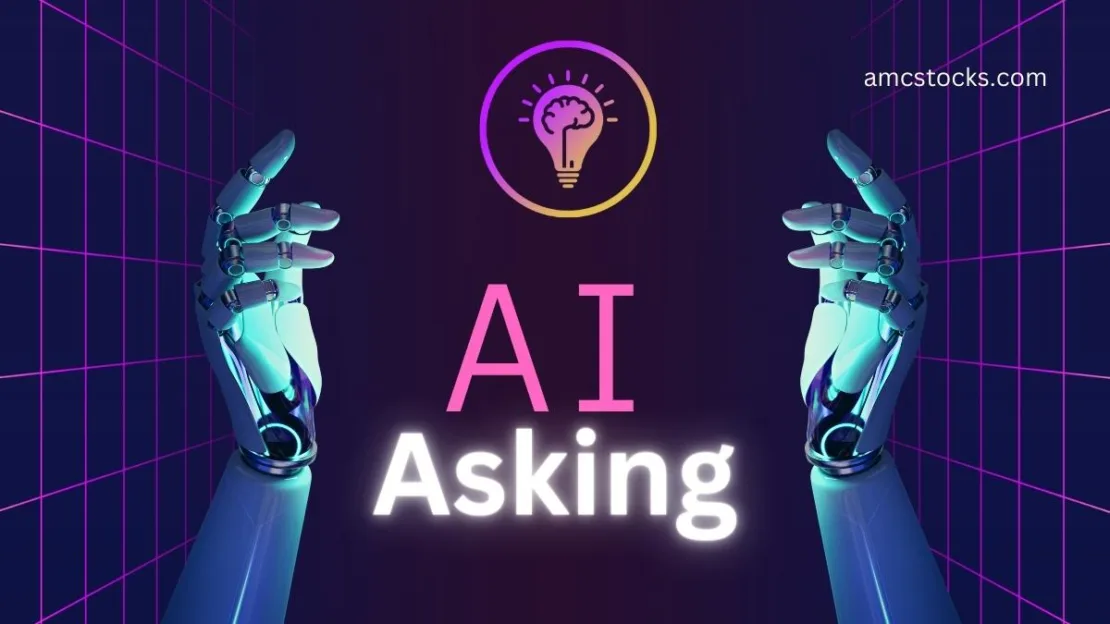AI Asking: Advancements, Applications, and Future Developments
I. Introduction
Artificial intelligence (AI) is rapidly advancing, and one of the areas where it is making significant progress is in its ability to ask questions and seek information. AI asking refers to the ability of machines to understand and generate human language in a way that closely resembles human communication. This trend is being driven by advancements in natural language processing (NLP) and conversational AI, which are enabling machines to understand and interpret human language, generate responses, and carry out tasks such as booking appointments or ordering groceries.
The significance of AI asking lies in its potential to transform the way we interact with machines and automate a wide range of tasks in various industries and domains. In this post, we will explore the applications of AI asking, the advancements that are driving its progress, the challenges and limitations it faces, and the potential future developments of this technologi.
II. Applications of AI Asking
AI has numerous applications, but two of the most significant are conversational AI and question-answering systems.
Conversational AI refers to the development of machines that can communicate with humans in a natural way, such as chatbots and virtual assistants. These systems rely on sophisticated algorithms and language models that can understand and interpret human language, generate responses, and carry out tasks such as booking appointments or ordering groceries. Examples of conversational AI systems include Apple’s Siri, Amazon’s Alexa, and Google Assistant.
Question-answering systems are another application of AI asking. These systems use machine learning algorithms to extract information from large datasets or knowledge bases in response to natural language queries. Question-answering systems are being used in various domains, such as healthcare, finance, and customer service, to automate routine tasks and provide faster, more accurate responses to user inquiries.
list of applications of AI asking:
- Chatbots: One of the most common applications of AI askings is in chatbots, which are computer programs that can simulate human conversation. Chatbots can be used for customer service, sales, and support, and can be integrated into various platforms, such as websites, messaging apps, and social media.
- Virtual assistants: Virtual assistants, such as Siri, Alexa, and Google Assistant, use A.I asking to understand and respond to user requests. They can perform a variety of tasks, such as setting reminders, playing music, and answering questions.
- Question-answering systems: Question-answering systems, such as IBM Watson, use A.I asking to answer complex questions by analyzing large amounts of data and providing relevant information.
- Personalization: A.I asking can be used to personalize user experiences by analyzing user data and preferences to make recommendations and provide tailored content.
- Healthcare: AI asking can be used in healthcare to help patients communicate with healthcare providers, monitor patient health, and analyze medical data.
- Education: A.I asking can be used in education to provide personalized learning experiences and help students with homework and research.
- Finance: AI asking can be used in finance for customer service, fraud detection, and risk management.
- Marketing: AI asking can be used in marketing for customer engagement, lead generation, and customer support.
- Human resources: A.I asking can be used in human resources for recruiting, employee engagement, and training.
- Gaming: A.I asking can be used in gaming to provide a more immersive experience and enable players to interact with game characters using natural language.
III. Advancements in AI Asking
Recent advancements in NLP and machine learning algorithms have been driving the progress of A.I asking. One of the key advancements in NLP is the development of deep learning techniques, such as neural machine translation, that can improve the accuracy and effectiveness of AI asking systems.
Additionally, the availability of large datasets and the rise of cloud computing and big data analytics have enabled developers to create more sophisticated AI systems that can handle complex tasks and scale up to meet growing demand. As a result, AI asking systems are becoming more capable of understanding human language and context and are increasingly being used in various industries and domains.
IV. Challenges and Limitations of AI Asking
Despite the progress being made in A.I asking, there are still significant challenges and limitations to this technology. One of the key challenges is the difficulty of interpreting the nuances of human language, such as sarcasm, irony, or cultural references. This makes it difficult for machines to generate accurate responses in some situations.
Another limitation is the lack of transparency and interpretability of some AI systems. Deep learning algorithms can be difficult to understand and explain, which can create ethical and legal concerns, particularly in sensitive domains such as healthcare or finance.
To address these challenges, researchers and developers are exploring new approaches to NLP, such as transfer learning and reinforcement learning, that can improve the accuracy and interpretability of A.I asking systems.
V. Future of AI Asking
The future of AI asking is likely to be shaped by several key developments. One of these is the integration of AI systems into everyday life, such as smart homes, wearables, and connected devices, which will make AI asking a ubiquitous part of our lives.
Another development is the emergence of new applications and use cases for AI asking, such as in education, entertainment, and gaming. As AI systems become more sophisticated, they will be able to provide more personalized and engaging experiences for users.
Finally, AI asking will likely continue to advance through the development of new algorithms and techniques, as well as the integration of other AI technologies, such as computer vision and robotics.
VI. Conclusion
AI asking is a rapidly advancing technology with numerous applications and significant potential to transform the way we interact with machines. Conversational AI and question-answering systems are two key applications of A.I asking that are being used in various industries and domains.
Advancements in NLP and machine learning algorithms have been driving the progress of AI asking, but there are still significant challenges and limitations to this technology. Interpreting the nuances of human language and ensuring transparency and interpretability of AI systems are two key challenges that researchers and developers are working to address.
The future of A.I asking is likely to be shaped by the integration of AI systems into everyday life, the emergence of new applications and use cases, and the continued development of new algorithms and techniques. As AI asking continues to evolve, it has the potential to revolutionize the way we interact with machines and automate a wide range of tasks in various industries and domains.



